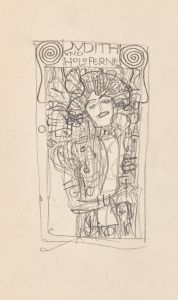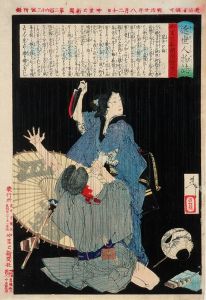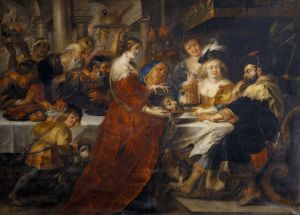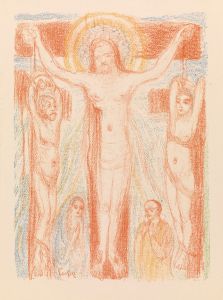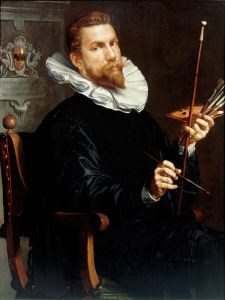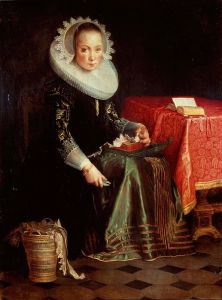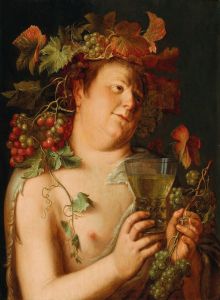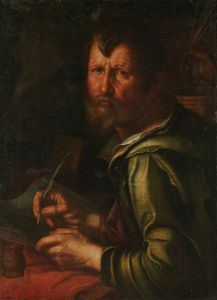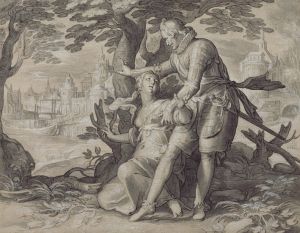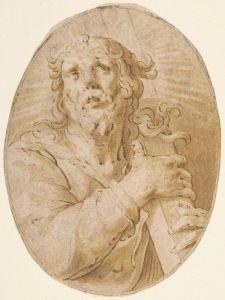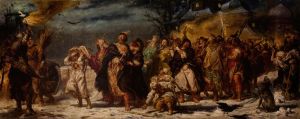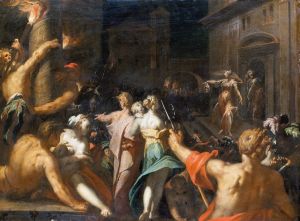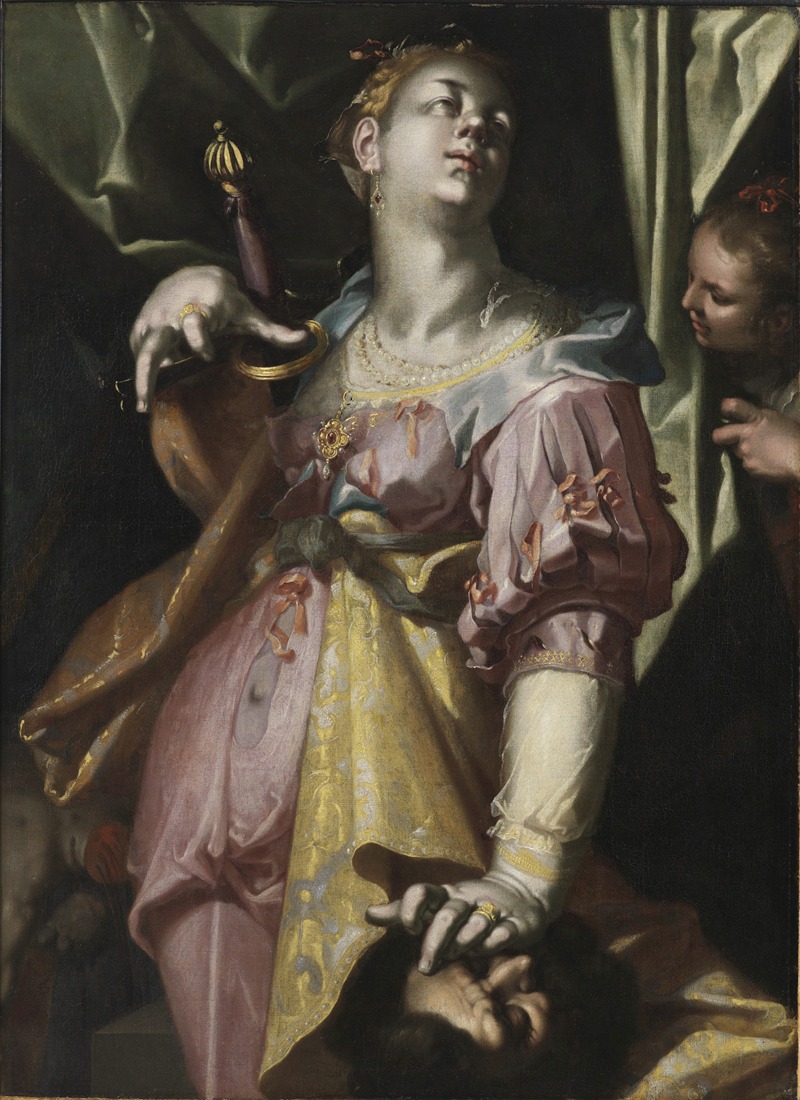
Judith and the Head of Holofernes
A hand-painted replica of Joachim Wtewael’s masterpiece Judith and the Head of Holofernes, meticulously crafted by professional artists to capture the true essence of the original. Each piece is created with museum-quality canvas and rare mineral pigments, carefully painted by experienced artists with delicate brushstrokes and rich, layered colors to perfectly recreate the texture of the original artwork. Unlike machine-printed reproductions, this hand-painted version brings the painting to life, infused with the artist’s emotions and skill in every stroke. Whether for personal collection or home decoration, it instantly elevates the artistic atmosphere of any space.
"Judith and the Head of Holofernes" is a painting by the Dutch Mannerist artist Joachim Wtewael, created in 1600. Wtewael, born in 1566 in Utrecht, was known for his intricate and highly detailed works that often depicted mythological and biblical scenes. This painting is a prime example of his skill and style, showcasing his ability to convey dramatic narratives through vivid imagery and meticulous attention to detail.
The painting illustrates the biblical story of Judith, a Jewish widow who saves her city, Bethulia, from the Assyrian army by seducing and then beheading their general, Holofernes. This story is found in the deuterocanonical Book of Judith, which is part of the Old Testament in the Catholic and Eastern Orthodox Christian traditions. The tale of Judith and Holofernes has been a popular subject in art due to its themes of courage, seduction, and divine intervention.
In Wtewael's depiction, Judith is shown holding the severed head of Holofernes, a moment of triumph and horror. The painting captures the aftermath of the beheading, with Judith standing resolute and composed, her expression reflecting a mix of determination and solemnity. The head of Holofernes, with its lifeless eyes and slack jaw, contrasts starkly with Judith's calm demeanor, emphasizing the gravity of her deed.
Wtewael's use of color and light in "Judith and the Head of Holofernes" is notable. The rich, vibrant colors and the dramatic use of chiaroscuro (the contrast between light and dark) enhance the emotional intensity of the scene. The detailed rendering of textures, such as the fabric of Judith's clothing and the flesh of Holofernes' head, showcases Wtewael's technical prowess and his attention to the subtleties of human anatomy and material surfaces.
The composition of the painting is carefully balanced, with Judith positioned centrally, drawing the viewer's eye directly to her and the head she holds. The background is relatively simple, ensuring that the focus remains on the figures and the dramatic narrative they embody. This simplicity also serves to heighten the impact of the scene, making the viewer acutely aware of the tension and drama of the moment.
"Judith and the Head of Holofernes" reflects the Mannerist style that Wtewael was known for, characterized by elongated figures, exaggerated poses, and a heightened sense of drama. This style was a departure from the naturalism of the Renaissance, favoring instead a more stylized and expressive approach to composition and figure rendering.
The painting is part of the collection of the Rijksmuseum in Amsterdam, where it continues to be admired for its artistic merit and its powerful depiction of a timeless story. Wtewael's work remains an important example of Dutch Mannerism and a testament to his skill as a painter and storyteller.





